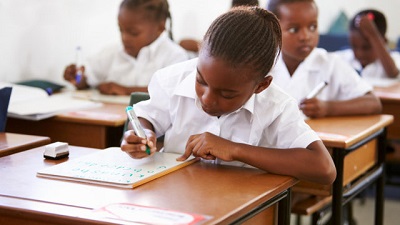Keeping in Touch With your Art Collectors

Marketing art can be a huge challenge. How do you get your art in front of people who will not only love it, but want to buy it as well? Should you invest in magazine ads? Participate in art festivals? Show your work in a local gallery? All valid tactics you should be pursuing, but you may be overlooking your best marketing opportunity: Selling to collectors who have purchased your work in the past.
This seems like an obvious suggestion – after all, past buyers clearly like your work and have explicitly told you they are qualified to purchase(nothing says “I can buy” like pulling out the credit card and buying). Yet I find that many artists and galleries are not putting their full efforts into marketing to past purchasers. If you aren’t actively pursuing sales with past collectors you are neglecting your best pool of potential buyers.
In a typical year 25-50% of my sales are made to existing customers. Existing collectors tend to buy larger and more expensive works, and the more they trust me and the better the relationship, the more frequently they will buy.
your biggest risk with collectors is not that they will stop liking your work, it’s that they will stop thinking about you
Perhaps you haven’t been as good at following up as you would like simply because you haven’t had a follow-up plan in place. I want to share with you some suggestions that will help make you a follow-up expert. Better follow-up will lead to more sales.
I’ve said it before, but it bears repeating: your biggest risk with collectors is not that they will stop liking your work, it’s that they will stop thinking about you. Don’t let this happen!
In this post I will give you a broad picture of what client communications should look like – I’ll focus on more specifics in future posts.
The Big Picture | Long Term Strategies for Keeping in Touch
Before I dive in to specific tactics, let’s take a moment to discuss my thoughts and motivations underlying my follow-up plan. By understanding what the long-term strategy is, you will better understand my suggestions and why each is important.
Build your Mailing List
Job #1 is building a mailing list and keeping it organized. You are going to have a hard time following up with your customers if you don’t have a good mailing list. Make sure you are keeping all of your addresses organized and up to date in a format that makes it easy for you to access the information.
Our ArtSala service will allow you to keep track of collectors, but a spreadsheet or even ledger book, will as well. Do what makes sense for you and allows you to easily keep track of your customers and potential customers.
Marketing is a numbers game, so the larger your pool of potential buyers the more sales you are going to make. Building an effective mailing list takes time, so if you haven’t already, get your mailing list started today.
Your goal in your continuing contact with collectors is threefold:
Continue building on the relationship you began when you first met or when they first bought
Keep them thinking about you and your art
Position yourself so that when they are ready to buy, you are the one they think about
Frequency of Contact
Whenever I talk about keeping in touch with collectors, the number one concern I hear expressed by artists and gallery sales staff alike is “I don’t want to annoy my customers.” A valid concern, to be sure, but while there certainly is a point where you would be crossing the line and being too persistent, most of the time you are erring on the opposite side and not contacting your collectors nearly enough.
As a general rule, I like to contact my collectors every 4-6 weeks. By varying the type of contact and keeping the contact relevant there is little risk of offending. Remember, your contact isn’t made in a vacuum – these are not strangers you are contacting cold – these are people with whom you have already begun to establish a relationship and who have bought your work – they want to hear from you.
I will also say that immediately after a purchase I will be in contact more frequently with the buyer. I’ve found that once a buyer has had a positive experience you have a window of opportunity to sell more art while the iron is hot.
Just after we opened our gallery in 2001 we had a couple wander in during a show and buy a small piece by the featured artist. The couple lived in the area and so I offered to install the piece for them. When I arrived at their newly-built home I saw that there were many empty spaces in need of art. I suggested bringing out more of the artist’s work and began a campaign of sending the clients images of additional pieces I thought might fit in their décor. In the ensuing three months we placed nearly a dozen additional pieces including two major works. It would have been easy to simply sell the clients that first small piece and let it go at that, but we would have missed out on a great opportunity to turn these buyers into major collectors.
Consistency
While frequency is important, even more important is consistency. Sending out a newsletter one time might feel good, but if you don’t continue to follow up, that single contact will likely be wasted. It will sometimes take dozens of contacts to generate additional interest or a sale – don’t give up after the first few attempts.
Start by devoting four hours a week to follow-up and you should be able to sustain consistent contact with your mailing list. That time will expand as your mailing list grows, but the time will be well invested.
What to Say
While you might instinctively understand the importance of keeping in touch, you might also be saying “what am I possibly going to say to my collectors every four to six weeks?” Glad you asked.
Your communications don’t have to be complicated or even all that fancy. By varying the type and content of your communication you can avoid becoming stale or repetitious (though a little repetition is certainly not a bad thing).
Let me share some general guidelines about communicating with your buyers and what you will say.
Make it Personal
Newsletters and postcard are great and should definitely be a part of your mix, but your most effective communication will be personal. Letters, hand written notes and personalized emails will be your most effective tools. A newsletter will be opened by some percentage of your buyers, especially if it is well crafted, but a personalized note will be sure to grab attention and will be read.
Use your client’s name in your communications and reference previous conversation you have had. Ask a question or two to encourage dialogue.
Provide Relevant Information and Images
If you have a client who has told you they are especially interested in one particular subject, try and tailor your communications so that you are primarily sending them images and information regarding that subject. While you can certainly include the client in your general mailing list for newsletters, etc, your personal communications should be built around the collector’s interest.
Tell a Story
A photo may be worth a 1000 words, but telling a good story about your art will sell it. A landscape painting my be interesting in and of itself, but telling the story about how you created the piece and what most excited you about the landscape will build interest in the work and cause your collectors to look at the work more closely. Creating the work may seem mundane to you, but your collectors are fascinated by what you do and how you do it. Give them details.
Talk about the inspiration for the art, what it was that drew you to the subject, and what the challenges were in creating the piece. If you created the piece on location, talk about the trip to get to the spot.
Show the Story
Provide not only photos of the artwork, but get photos (or video) of yourself creating the piece. These images will draw the collector into the story and help them feel they truly understand what it took to create the piece.
Provide Valuable Information
Some of your communications might have nothing to do with your art. Send your collectors copies of interesting magazine article or how-to information related to displaying or collecting art. Become a trusted advisor and indispensible guide to your collector and they will thank you with future sales.
Tools for Keeping in Touch
 Be creative and varied in your communications. As I mentioned earlier, you don’t have to (or even want to) get stuck in a rut of doing the same thing over and over. Below are a list of communication methods you can use to keep yourself in front of buyers. In future posts I will delve into each of these and talk about the mechanics of putting them together and content.
Be creative and varied in your communications. As I mentioned earlier, you don’t have to (or even want to) get stuck in a rut of doing the same thing over and over. Below are a list of communication methods you can use to keep yourself in front of buyers. In future posts I will delve into each of these and talk about the mechanics of putting them together and content.
Active Marketing
Letter/Personal Note
Postcards
ENewsletter
Service Calls
Passive Marketing
Facebook/Twitter/Other Social Media
Blog
Website
When to Quit
When should you give up on a buyer and stop communicating with them? In a word, NEVER. Realize that it may be years before you hear from a buyer again or before they are ready to buy.
Only when a client tells you they are not longer interested and would like you to stop sending them messages will you quit.
Become Strategic in your Communications
Don’t leave your communications with buyers to chance, plan ahead. Rather than waiting for a reason to communicate to strike (it never will) plan out your communications ahead of time. Sit down once a quarter and plan out what your communication strategy will be for the coming months. The more specific you are in your plans, the better. Make it so that you can spend your marketing time sending the communications out instead of trying to figure out what they should be.
What you Should do Today
I encourage you to take action today to begin better communications with your collectors. Start by cleaning up your mailing list (or starting your mailing list if you don’t have one). Sit down and plan out your communications for the next three months. Most importantly, commit yourself to constant contact with your collectors.
What do you Think?
Have you had success selling to past customers? Is marketing to past buyers a regular part of your selling efforts? Do you have concerns or questions about regular contact with past buyers? Please leave your comments and questions below.
If you find the posts and discussions on reddotblog.com helpful, would you please share them with your social media contacts or post a link on your blog? The wider the audience the posts reach, the better the discussion. Thank you!


